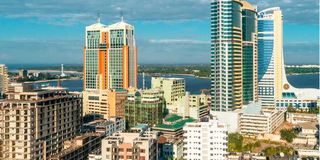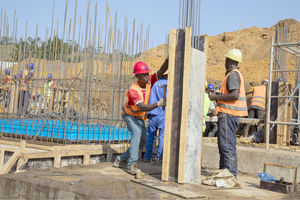Dar high-rise rentals see price drop, offer new opportunities

What you need to know:
- The 2023 Financial Stability Report from the Central Bank of Tanzania highlights a significant decrease in rental prices across various high-rise buildings nationwide.
Dar es Salaam. Looking for a high-end office or apartment in Dar es Salaam but discouraged by the cost? A new report suggests this might be your lucky break.
The 2023 Financial Stability Report from the Central Bank of Tanzania highlights a significant decrease in rental prices across various high-rise buildings nationwide.
The report covers 13 residential and mixed-use commercial properties, revealing that seven experienced reduced rental rates in 2023 compared to 2022.
Prices remained stable for three properties and increased for three others.
For example, rent per square meter at the Golden Jubilee Building decreased from Sh36,000 to Sh25,000 between December 2022 and December 2023. Similarly, Twin Towers saw a reduction from Sh32,000 to Sh25,000 per square meter during the same period.
Additional declines were noted at The International House Property (Sh28,000 to Sh25,000), Mafao House (Sh16,000 to Sh12,000), Samora Avenue (Sh18,000 to Sh16,000), and PSSSF Tower I (Sh18,000 to Sh17,000 in 2023 from Sh18,000 in 2022). Quality Plaza also saw a decrease from Sh22,000 to Sh21,000 per square meter.
Reasons for the price drops include technological advancements shifting business activities online, reducing demand for physical office spaces, as explained by Economics Scholar Aurelia Kamuzora from Mzumbe University.
She also cites an oversupply of buildings and the economic impact of Covid-19, which led to reduced office needs as companies adapted to remote work.
While many buildings have seen rent reductions, others such as Benjamin Mkapa Building (Sh20,000), Social Security House (Sh16,000), and Commercial Complex Sam Nujoma (Sh27,000) have maintained stable prices.
Despite these fluctuations, the average occupancy rate in commercial buildings has steadily risen from 80 percent in 2020 to 85 percent in 2022, indicating recovery in the real estate sector post-Covid-19. This recovery correlates with improved business conditions, infrastructure, and rising demand, according to the report.
While some buildings have increased rents due to economic improvements and population growth pressures, others face challenges as citizens move away from city centers.
Economic expert Dr Abel Kinyondo attributes declining urban rents to an oversupply of buildings relative to low demand.
But even then, Tanzania’s real estate sector remains dynamic, shaped by economic shifts, technological advances, and demographic changes.
As rental prices adjust to market conditions, opportunities arise for tenants seeking affordability and investors navigating a changing commercial property landscape.
The 2022 building census reveals that Tanzania boasts a total of 14,348,372 buildings, with 13,907,951 situated on the mainland and 440,421 in Zanzibar. A significant majority (94.4 percent) of these buildings across Tanzania are single-story.
Residential buildings account for nine out of every ten structures, while 3.4 percent serve as mixed residential-commercial properties. Notably, 98.0 percent of residential and mixed-use buildings consist of single units.
Rural areas encompass 10,038,201 buildings, while urban areas host 4,310,171. The highest density of buildings on the mainland is found in the Dar es Salaam Region (913,707), followed by Mwanza (868,430) and Dodoma (836,909).
For newcomers to Dar es Salaam, the abundance of highrise buildings, totaling 32,219 multi-story structures in 2022, is a notable feature.
This abundance has piqued the interest of individuals accustomed to low-rise living, enticing them to consider high-rise residences or offices, even if they reside outside the city.





